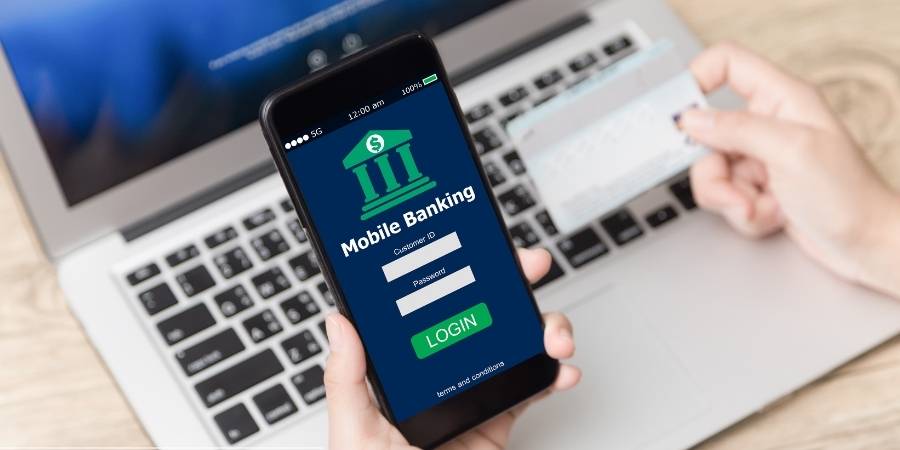Money management in the United States is getting a modern upgrade. People no longer need to stand in long lines at the bank or wait for a teller to help with basic tasks. Today, everything from paying bills to opening a savings account can happen on your phone. Mobile banking and digital-only banks are changing the way Americans handle their finances, and the shift is happening fast.
Banking Is Now in Your Pocket
Remember the days when going to the bank was a part of the weekly to-do list? That’s no longer the case for millions of people. With just a few taps on a smartphone, users can check their balance, transfer money, deposit checks, and even apply for a loan.
All thanks to mobile banking apps, there is no need to plan one’s day according to bank timing. Almost all banks in America today have convenient apps that can be accessed 24/7. And for many, that’s a game-changer. It saves time, it minimizes stress, and it makes it simpler to keep tabs on day-to-day money issues.
What Are Digital-Only Banks
In contrast with physical banks with branches, online-only banks exist solely online. That is, there are no buildings, no tellers, and no in-person paperwork to fill out. It’s all done through websites or apps. Online banks are concerned with ease, quickness, and convenience.
A few of the most well-known U.S. digital-only banks are Chime, SoFi, and Varo. They provide much of the same functionality as traditional banks, checking accounts, savings accounts, debit cards, and even early direct deposits. And frequently, they have fewer fees. That’s part of the reason younger generations, particularly Millennials and Gen Z, are attracted to them.
Lower Fees and Better Access
One of the greatest advantages of online banking is reduced expenses. Most online banking facilities don’t have monthly maintenance fees, nor do they have minimum balance requirements. That is more convenient for individuals who live paycheck to paycheck or are just beginning to become financially established.
For rural residents or those in small towns, mobile and online banking also offers access to banking services that are not available locally. So long as there is internet or a phone signal, they can bank anywhere. That’s particularly vital in the present world where flexibility is more crucial than ever.
A Safer Way to Bank
Some people fear that online banking is not secure. But the reality is, it’s built to be secure. Most mobile banking applications employ such things as fingerprint or face ID, two-factor authentication, and encryption to safeguard your data. Banks also provide real-time notifications if something unusual occurs with your account.
And if a debit card is lost or stolen, you don’t need to call customer service and hold. Most apps allow you to freeze or cancel the card on the spot and order a replacement from your phone. These rapid actions cut the risk of fraud and protect your money better.
Budgeting Tools That Actually Help
Most mobile banks also have built-in features that assist individuals in seeing how they spend money. These break the spending down into easily understandable categories such as groceries, eating out, and bills. It doesn’t make budgeting seem so scary.
Instead of relying on spreadsheets or paper receipts, individuals can set budgets, monitor spending, and receive reminders directly from their phone. These capabilities assist Americans in developing healthier money habits without the need for a financial background.
No More Waiting for Payday
Some online banks provide early access to direct deposits, sometimes even as much as two days early. That may not sound like a big deal, but to a person who is waiting on a paycheck to cover rent or groceries, it really does make a difference.
This type of flexibility isn’t a pleasant extra; it’s turning into a reason why so many people are making the change from old-fashioned banks to banking digitally. When your bank gets your daily needs, handling money is simpler and less worrisome.
The Rise of Cashless Living
More and more Americans are turning to cards and apps rather than cash. Whether it’s paying at the checkout with a tap, sending money to a friend, or ordering coffee from an app, cash is fast becoming obsolete.
Mobile banking facilitates this movement by allowing it to be easy to monitor spending in real time. You’re always aware of where your money is going. And if something doesn’t look right, you can correct it immediately.
The Future of Banking Is Already Here
It’s apparent that online banking in the USA is not merely a fad, it’s the future. As technology continues to evolve, such services will only become faster, smarter, and even more personalized.
More and more banks are incorporating useful features such as saving round-ups (where each purchase gets rounded up and the extra cents get saved) and automatic bill payment. It’s easier to create good habits without having to consciously think about it.
Mobile banking and digital banking are providing consumers with more control, more convenience, and more tools to manage money in daily life. From fee avoidance to early payment to monitoring spending on the move, these new modes of banking are in tune with contemporary lifestyles.
To most Americans, this is a change that translates into less time worrying about money and more time living. And actually, that’s what good money management is all about.



